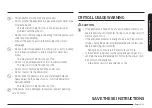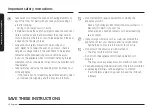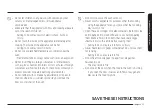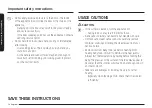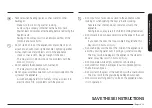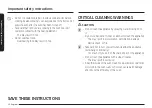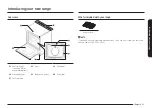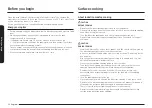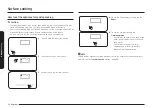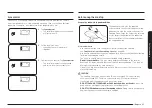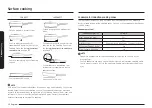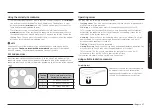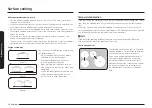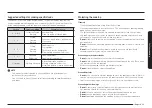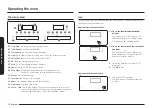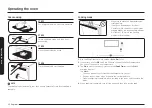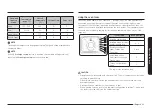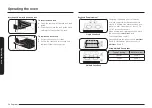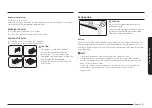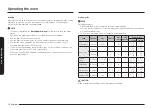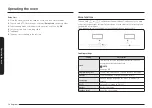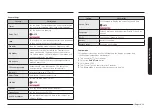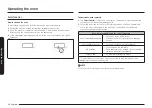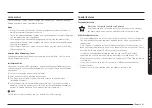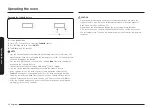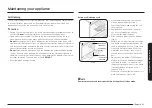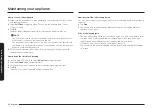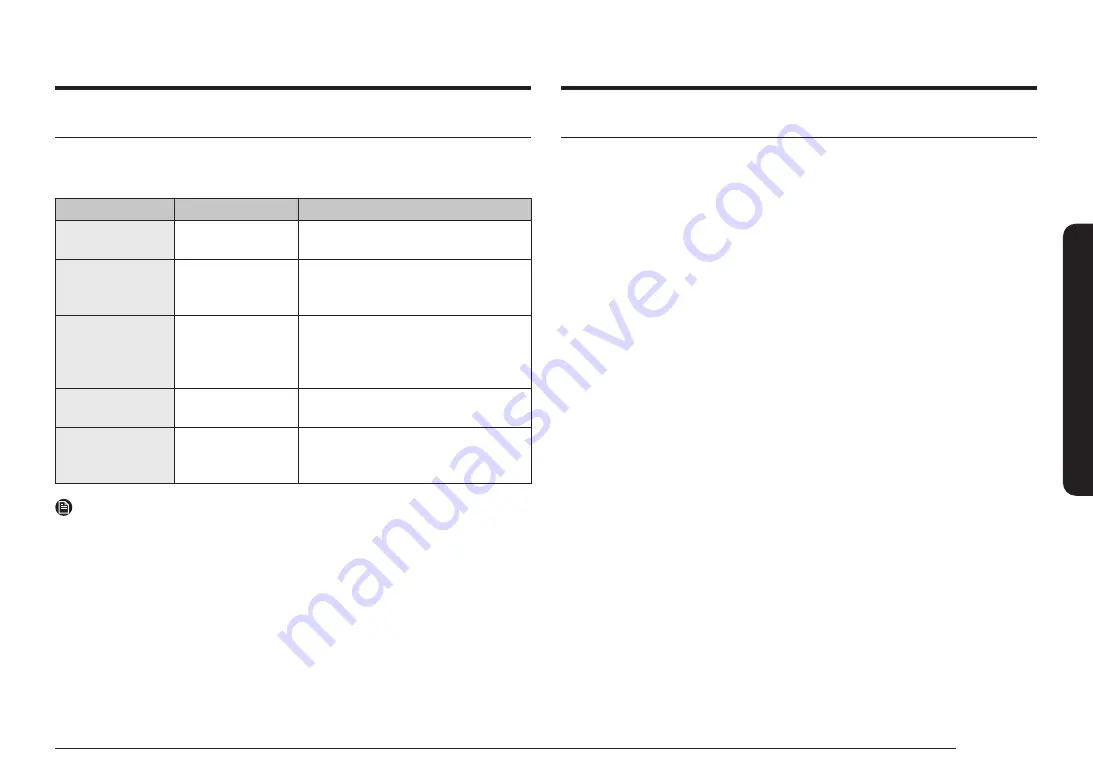
English 29
Sur
fac
e c
ooking
Protecting the cooktop
Cleaning
•
Clean the cooktop before using it for the first time.
•
Clean your cooktop daily or after each use. This will keep your cooktop looking
good and can prevent damage.
•
If a spillover occurs while you are cooking, immediately clean the spill from
the cooking area while it is hot to prevent a tough cleaning chore later. Using
extreme care, wipe the spill with a clean, dry towel.
•
Do not
allow spills to remain on the cooking area or the cooktop trim for a long
period of time.
•
Do not
use abrasive cleansing powders or scouring pads, which will scratch the
cooktop.
•
Do not
use chlorine bleach, ammonia, or other cleansers not specifically
recommended for use on a glass-ceramic surface.
Preventing marks and scratches
•
Do not
use glass cookware. It may scratch the cooktop.
•
Do not
place a trivet or wok ring between the cooktop and the pan. These items
can mark or scratch the cooktop.
•
Make sure the cooktop and the pan bottom are clean.
•
Do not
slide metal pans across the cooktop.
Preventing stains
•
Do not
use a soiled dish cloth or sponge to clean the cooktop surface. A film will
remain, which may cause stains on the cooking surface after the area is heated.
•
Continuously cooking on a soiled surface can result in a permanent stain.
Preventing other damage
•
Do not
allow plastic, sugar, or foods with high sugar content to melt onto the
hot cooktop. Should this happen, clean immediately.
•
Do not
let a pan boil dry as this will damage the cooktop and the pan.
•
Do not
use the cooktop as a work surface or cutting board.
•
Do not
cook food directly on the cooktop. Always use the proper cookware.
Suggested settings for cooking specific foods
The figures in the table below are guidelines. The power settings required for
various cooking methods depend on a number of variables, including the quality
of the cookware being used, the type, and amount of food being cooked.
Setting
Cooking method
Examples for use
8 - 9 (Hi)
Intensive Frying
Boiling
Rapid boiling
Deep fat frying of frozen foods
6 - 8
Frying
Stewing
Boiling
Pancakes, steak, cutlets, grilled meat
Clear soup
4 - 6
Frying
Stewing
Boiling
Cooking pasta
Frying eggs
Thick soup, sauces, and gravies
Slow boiling rice and milk dishes
2 - 4
Poaching
Defrosting
Cooking potatoes
Cooking soft vegetables
1 (Simmer)
Melting, Warming
Defrosting frozen vegetables
Melting chocolate and butter,
dissolving gelatin, simmer, keep warm.
NOTE
•
The power settings indicated in the table above are provided only as
guidelines for your reference.
•
You will need to adjust the power settings according to specific cookware
and foods.

